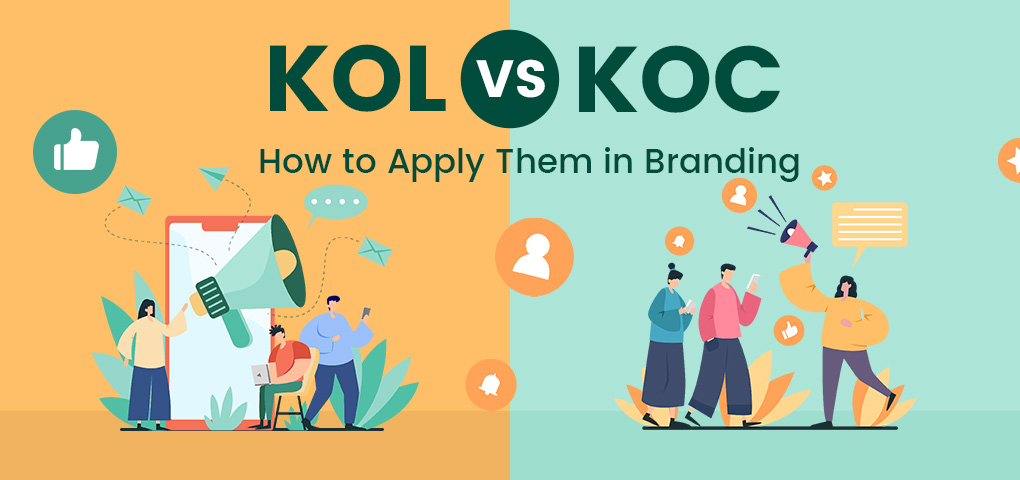Ever wondered how a company that existed centuries ago is still relevant today? The simple answer is “rebranding”. One thing is consistent in this world and that is trends. Trends are present happenings in a particular demographic. As trends are constantly changing and evolving, customer preferences change accordingly. To attract new clients, remain relevant, and stand out among competitors companies upgrade their services in a process known as rebranding. In this post, we will introduce company rebranding, what is rebranding, and why rebranding is important.
Rebranding definition - so what is rebranding? Rebranding is a marketing strategy whereby a company puts in the effort to stay relevant, improve brand awareness, attract new audiences, and stand out among competitors. The company does this by:
- changing/reviewing its logo, slogan, and marketing materials
- defining new values, vision & mission statements that will appeal to the minds of customers, partners, leads, and competitors
As customers’ tastes, choices, and preferences change due to trends and advancements in technology, companies rebrand to maintain their identity.
Why Rebrand?
Ever wondered why most successful companies rebrand? So far, we’ve seen the likes of Payoneer, Unilever, and Uber rebrand over the years. What motivated or pushed them to rebrand? Consider the following reasons:
- If a company is struggling to stand out from the competition, rebranding performs wonders – Uber is a typical example.
- If customers are not going beyond your homepage, then evolving your brand is very important. You may need to review your brand logo, modify your vision & mission statement, etc. depending on what no longer appeals to your audience.
- Many companies rebrand when they want to expand their business scope and/or venture into a new market. Some start by changing their business name, others change their logo.
- Companies rebrand because they recognize the need to attract and engage their audience in a specific niche.
What Are the Top Benefits of Rebranding?
1. Connect your brand with a new audience
Arguably, this is the biggest benefit of rebranding. Rebranding can offer brands the opportunity to showcase their business in a way that will appeal to a new audience in an ever-evolving market.
2. Improve brand awareness/recognition
The obvious desire for this ever-evolving audience is for brands to relate with them genuinely. People are humans and as such have feelings. When a company engages its audience with genuine story and videos that matches their opinions, they easily connect with the audience. Sometimes, it takes a compelling/clever story for a brand to find its way into the minds of its audience.
3. Improved Google ranking
Search engine ranking is a juicy reward for rebranding. After rebranding, customers are likely to engage with your new brand. If that be the case, your search engine rank will increase because Google has evaluated your efforts.
4. Stand out from the competition
As you rebrand your business, it is only natural for it to stand out from the competition. What rebranding does to your brand is that it shows potential clients that your approach to meeting their needs is unique. Rebranding can also be a great way to distinguish your products or services from the competition, setting your brand apart as the industry leader.
5. Increased relevancy
Rebranding is the reason a company of 125 years remains relevant. Rebranding ensures that a company keeps pace in terms of new trends, marketing, and customers’ ever-changing tastes. Take companies like Samsung for an instance. The company started by creating Java phones and when they noticed that people were switching to Android devices, they started making Android phones. Samsung has managed to capture the hearts of billions of audiences and has boosted sales in return.
When do brands need to be upgraded?
Knowing why companies rebrand isn’t enough, the “when” also needs to be considered. Probably you have legitimate reasons to rebrand, at what time do you need to rebrand? In 5 circumstances, companies may need to consider rebranding:
- When a company needs a new target audience for its new line of products.
- We advise rebranding when a company has an outdated image that the audience cannot relate to.
- You may consider rebranding when you want to improve your company's reputation and re-win customers’ trust & loyalty again. People might be talking ill about your brand or probably your customers went wild on social media due to customer dissatisfaction or low-quality products.
- When two companies join forces and become one, rebranding is done to communicate the development to the public. This will avoid confusion and increase customers’ trust.
- Rebranding can help to connect a company with an international audience, distinguishing the brand for global recognition.
- Many companies rebrand when there is a change in leadership. When there is a new leader, a new identity is the best possible way to communicate the transition.
NB: Rebranding can cost a lot of money for both small and large companies. Just because you are not making any sales or you don’t like your logo anymore isn’t a pointer that you need rebranding. It goes beyond these.
So How Do You Rebrand?
Are you convinced that your company needs rebranding? Take a closer look at the following steps on rebranding your business.
1. Reconsider your company name
We don’t often recommend you change your company’s name except if it does not align with your mission & vision statements, as well as core values. Your new company name should match your identity and also support your short and long-term goals. Remember to keep it simple and memorable.
2. Revise your brand slogan
If you want your audience to identify with your brand, ensure to create a short and memorable slogan that highlights your brand’s purpose. Take, for instance, Nike – Just do it, Adidas – Past, Present, Future. Consider the following when creating a slogan for your brand:
- keep it simple, concise, clear, and memorable
- consider your target audience and market
- let it contain your unique value proposition
- ensure that it is unique
3. Change your logo
A brand logo is a powerful tool that your audience uses to remember your brand. When someone mentions Apple, the Apple logo comes to mind. When Nike is mentioned, the swoosh logo comes to mind. If your company logo does not represent your brand as it ought to, consider the following tips to make it correct:
- create a unique logo
- it’s best to keep your logo simple – you don’t want to confuse your audience
- ensure that your new logo reflects your mission, vision, and values in the long term
- use universal shapes, colors, and styles
- don’t completely erase your old logo, use parts of it to help customers recognize your brand – consider the old Mastercard and new Mastercard logo
4. Redefine your target audience and market
Conduct in-depth market research to better understand your target audience, how your brand can impact the audience, what makes your competitors unique, and identify buyers’ preferences. As soon as you get this data analysis, implement it in your marketing strategy.
5. Analyze your vision, mission, and values
Maybe your mission/vision/values do not align with your brand name or logo, you need to scrutinize each of them.
Mission: This is the roadmap of your business. Your mission statement describes your products, consumers, and business location. Your mission changes if there are any changes to any of these.
Vision: Vision defines your company’s action and gives brand direction over time. Redefining the vision becomes important when the direction of the business changes.
Values: Company values highlight why you are committed to your mission and why you are working towards your vision. Again, your company's values can change over time just remember to reflect your new values for your employees and audience to be aware.
NB: When communicating changes on any of these components to your audience, the tone and voice have to align with the message you want to convey.
6. Re-establish your brand identity on Social media
Logo, colors, photos, shapes, etc. are several components that form your brand identity on social media. Many companies go as far as implementing a Facebook rebrand to keep their audience engaged.
Use different colors: When choosing a color, ensure to use one that will depict your brand image. Successful brands use cool tones that come out well in print and on-screen. You want to avoid complex colors and too many color combinations.
Reconsider your visual elements: Make sure your photos and shapes match your brand’s message. Remember to keep the flow and retain quality.
Conclusion
What have you learned so far? Rebranding means, why rebrand, benefits of rebranding, when/how to rebrand. Cool. But know this; rebranding your company to appeal to your audience can be an overwhelming task. You always want to stay ahead to show your customers that you pay attention to the trends within your industry. However, before you start company rebranding, you want to ensure you have reasons for rebranding.







